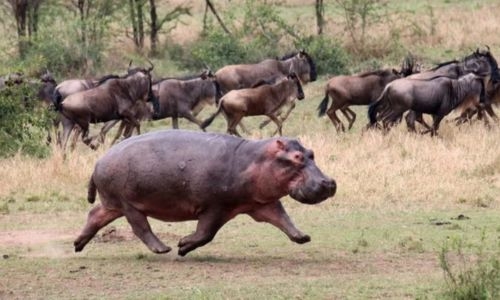Hippos Get Air! New Study Reveals Surprising Speed and Gait of Land Locomotion
TDT | Agencies
The Daily Tribune – www.newsofbahrain.com
Despite their hefty stature, hippos are surprisingly athletic creatures on land, according to a new study by researchers at the Royal Veterinary College (RVC). The study, which investigated hippopotamus movement and gaits, found that these massive mammals primarily use a trotting gait, even at slow walking speeds. But the most interesting revelation is that the fastest hippos actually become airborne for a significant portion of their stride!
Previously, there was some debate about how hippos move on land. Some research suggested a standard walk, while others described a trot. This new study, using detailed analysis of video footage, definitively shows that trotting is the dominant gait for hippos.
However, the study goes a step further. It reveals that the fastest-moving hippos achieve surprising bursts of speed by becoming airborne for a short period during each stride. This "aerial phase" can last for up to 15% of the entire stride cycle, which translates to roughly a third of a second for a fast-moving hippo.
This finding challenges our understanding of how large land mammals move. Most large animals switch between various gaits depending on their speed. For example, a rhinoceros might walk at a leisurely pace, then transition to a trot and eventually a gallop as it picks up speed. Hippos, on the other hand, seem to stick to their trotting ways, even when aiming for maximum velocity.
The RVC researchers believe that the unique body structure of hippos, with their short legs and massive size, restricts their ability to adopt other gaits. However, this trotting gait with an "aerial phase" seems to be an effective way for them to achieve surprising bursts of speed when needed, perhaps during territorial disputes or predator encounters.
This new study sheds light on the fascinating locomotion of these semi-aquatic giants and highlights the need for further research into their impressive athleticism on land.
Related Posts

